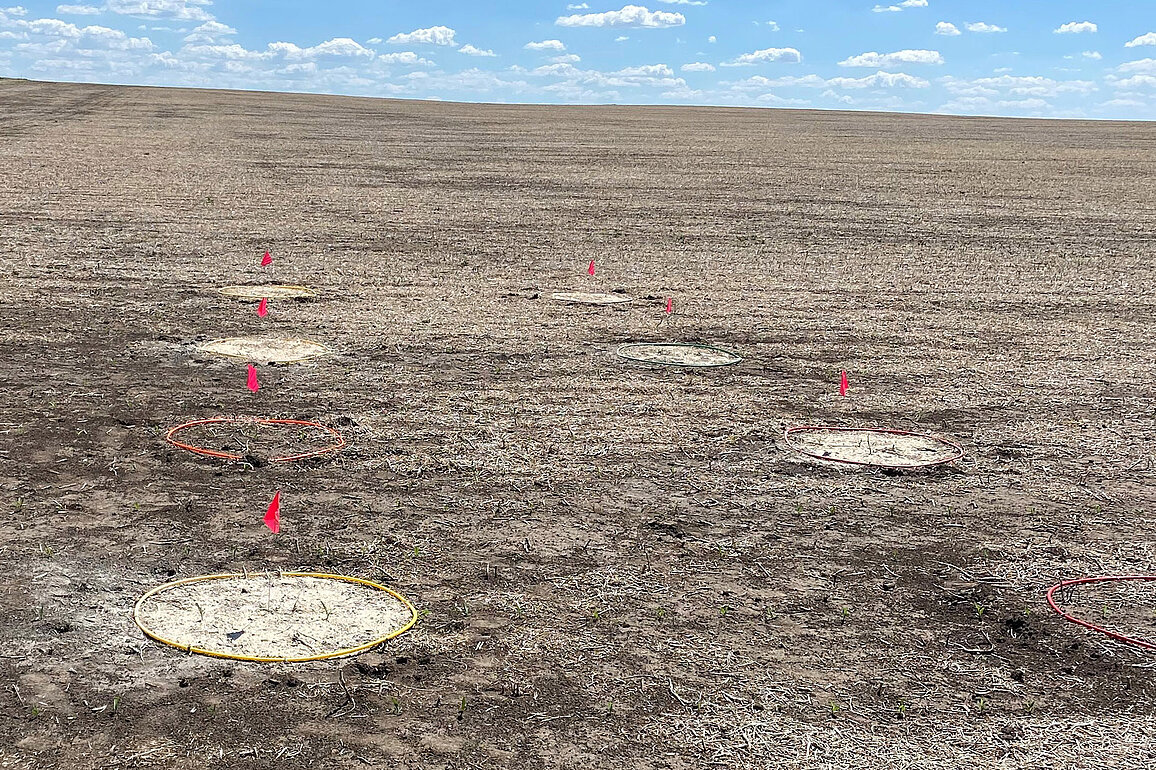Dickinson REC Tackles Regional Soil Acidity

The opposite of soil alkalinity is acidity. While a large portion of the state worries about soil pH being alkaline, crop producers in the Dickinson area and parts of western North Dakota are battling a different beast, acidic soils.
Traditionally found in the southeastern U.S. and the southern Great Plains, acidic soils are now being discovered from western North Dakota through central Montana.
“Soil pH is a measure of soil acidity or alkalinity, and anything below 7 is considered acidic,” says Chris Augustin, NDSU Dickinson Research Extension Center (DREC) director. “Some of the areas we’ve tested have a pH below 5.5. When the pH drops below these levels it impacts nutrient availability, activity of bacteria in the soil, and reduces yield from Aluminum toxicity.”
“The best management practice for these situations in no-till operations is a surface application of lime,” explains Ryan Buetow, NDSU Extension cropping systems specialist at the DREC. “However, it takes a large amount of product to change soil chemistry to adequate levels and a surface application can take time to adjust pH levels. Producers are searching for less costly short-term options, especially for rented land.”
Starting in 2018 and continuing to 2021, research has been conducted at the Dickinson REC to better understand the soil acidity issues in the area.
2018’s research included planting multiple wheat varieties to study how they performed in low pH soils. Significant differences were found in yield and test weight among the crop varieties studied.
A comparison of lime and phosphorous treatments applied with the seed in acidic soil was conducted to observe impact on growth and yield on soybeans in 2020. Calcium treatments such as lime applied with the seed at 75 pounds per acre showed a yield increase for soybeans. For soybeans, phosphorus treatments decreased stand and yield as shown in previous NDSU research.
In 2021, a trial was conducted observing different seed treatments applied on tolerant and susceptible varieties of hard red spring wheat on acid soils. Buetow found that adding phosphorus in furrow to a susceptible variety, a variety that is impacted by acid soils, showed a positive yield response, however the phosphorus was not necessary for tolerant varieties.
Buetow added that it is important to keep in mind that acidity and alkalinity have nothing to do with salts, even though saline soils are often referred to as “alkaline.”
Buetow concludes, “The issue we are discussing has to do with pH, which can vary widely across a field. Site-specific zone soil testing is vital because you can have alkaline and acid soils within the same field.”
----
For more information:
Chris Augustin, 701-456-1103, chris.augustin@ndsu.edu
Ryan Buetow, 701-456-1106, ryan.buetow@ndsu.edu


